MobileVillage (MV) & Appcelerator (APP) bring you a quick read of the week’s biggest mobile apps news & mobile tech news. In this mobile news roundup: 2018 iPhone XS leak, iPad Pro X rumor, Galaxy Note 9 reviews, Pocophone for India & Europe, 2018 Dell Inspiron notebooks, Acer’s world’s thinnest laptop, new Intel processors, Nvidia Turing, Lenovo ThinkPad P1, new Asus ZenBook Pro vs MacBook Pro, future Chromebooks boot Windows, Acer Ojo 500 AR/VR headset, Magic Leap One reviews, Vicon Origin VR kit, NASA VR & mobile apps, Syria humanitarian apps, Chinese tech banned for US agencies, and more.
Pictured above: Porsche concept car demo with new Nvidia Turing graphics
Apple 2018 iPhone XS leak, iPad Pro X rumor
On September 12, Apple will hold an event where we’ll see new hardware—and the rumors have been flying. Thanks to a new leak by 9to5Mac, there’s no doubt we’ll see the new Apple Watch 4 with a 15% bigger display. We’ll probably also see three 2018 iPhones.
 Update: On August 30th 9to5Mac posted a leaked image (pictured here) that appears to be the 2018 iPhone XS, which Apple is now expected to launch September 12th in two sizes: 6.5 inches and 5.8 inches. Also new: a gold color iPhone XS option. No other details yet on the 2018 iPhone XS leak, but you can see it in full size on 9to5Mac.
Update: On August 30th 9to5Mac posted a leaked image (pictured here) that appears to be the 2018 iPhone XS, which Apple is now expected to launch September 12th in two sizes: 6.5 inches and 5.8 inches. Also new: a gold color iPhone XS option. No other details yet on the 2018 iPhone XS leak, but you can see it in full size on 9to5Mac.
The third 2018 iPhone (likely called iPhone 8s or iPhone 9) is expected to be 6.1 inches and with an aluminum frame instead of the stainless steel on the iPhone X and XS.
Will we also see a rumored 2018 iPad Pro X with ultra-thin bezels and gesture interface in place of a home button? iMore rounds up the rumors and tries to make sense of it. We do know that we won’t we won’t yet see Apple AR glasses, though Apple just bought an AR lens maker. — MV
Android Pie is out of the oven! First Android Pie reviews
This week Google officially released Android P–now known as Android Pie. While many still prefer some iCake, Android Pie offers some tantalizing reasons to taste the latest in Android. Here are the first Android Pie reviews from Android Authority, Android Central, Engadget, MobileTechReview (video only) and The Verge. — MV
Galaxy Note 9 reviews — Best big phone of the year?
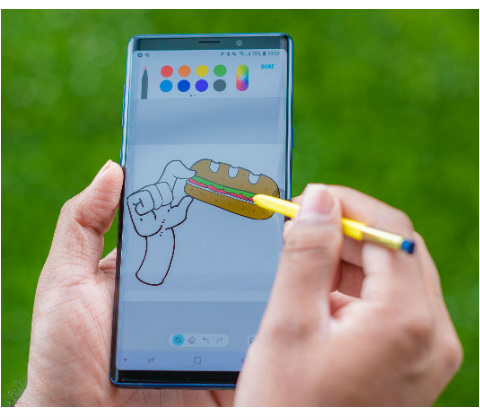 If you want a new big phone and don’t mind spending at least a thousand dollars, the new Samsung Galaxy Note 9 is worth a look. As you’d expect from a $1,000+ phone, the Galaxy Note 9 specs are top-tier: 6.4-inch ‘Super’ AMOLED (2,960 x 1,440) display, IP68 waterproofing, octa-core Snapdragon 845 processor, 6GB or 8GB of RAM, 128GB or 512GB of storage, MicroSD card support, dual 12MP wide-angle and telephoto lenses, 8MP selfie-cam, new S Pen remote controls, USB-C quick-charging, and a battery that lasts up to two days.
If you want a new big phone and don’t mind spending at least a thousand dollars, the new Samsung Galaxy Note 9 is worth a look. As you’d expect from a $1,000+ phone, the Galaxy Note 9 specs are top-tier: 6.4-inch ‘Super’ AMOLED (2,960 x 1,440) display, IP68 waterproofing, octa-core Snapdragon 845 processor, 6GB or 8GB of RAM, 128GB or 512GB of storage, MicroSD card support, dual 12MP wide-angle and telephoto lenses, 8MP selfie-cam, new S Pen remote controls, USB-C quick-charging, and a battery that lasts up to two days.
The Note 9 is now available online and at major stores. To help you decide if it’s worth all of that money, we’ve summarized the top Galaxy Note 9 reviews on major tech news sites. Check out our reviews roundup here. — MV
Pocophone bring high-end specs to India, Europe for $300
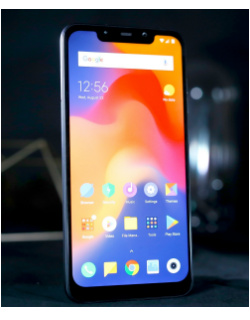 Only have $300, but want a phone with Galaxy Note 9 specs? If you’re in India or Europe, you can soon get the new Pocophone F1, a sub-brand of China’s top phone maker Xiaomi. Despite its $300 price, the Pocophone F1 somehow manages to include a Snapdragon 845 processor, 6GB of RAM, 64GB of storage, (upgradable to 8GB of RAM and up to 256GB of storage), a 6.18-inch, Full HD+ display, 20-megapixel front-facing camera, fast rear fingerprint sensor, and a large 4,000mAh battery.
Only have $300, but want a phone with Galaxy Note 9 specs? If you’re in India or Europe, you can soon get the new Pocophone F1, a sub-brand of China’s top phone maker Xiaomi. Despite its $300 price, the Pocophone F1 somehow manages to include a Snapdragon 845 processor, 6GB of RAM, 64GB of storage, (upgradable to 8GB of RAM and up to 256GB of storage), a 6.18-inch, Full HD+ display, 20-megapixel front-facing camera, fast rear fingerprint sensor, and a large 4,000mAh battery.
While the Pocophone F1 isn’t perfect, for its low price the phone delivers “an impressive balance between price and performance,” says Engadget in its initial review. If you’re in India, you’ll be able to order the Pocophone F1 for ₹20,999 (about $300). Xiaomi also plans to bring the F1 to Europe, and may expand to the Americas for future Pocophone models. — MV
Lenovo Thinkpad P1 — MacBook Pro killer?
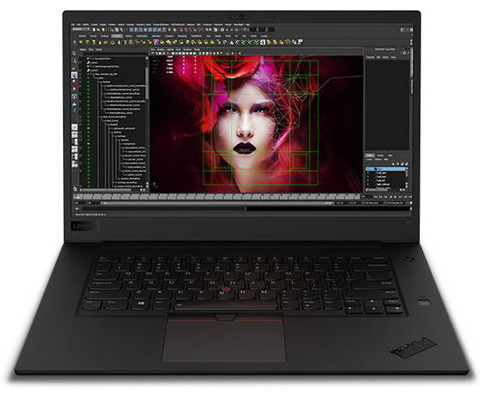 Want a thin, light MacBook Pro alternative? The new Lenovo Thinkpad P1 is 35 percent smaller than the company’s previous 15-inch, high-end models at just 18.4 mm (0.72 inches) thin and 1.7 kg (3.76 pounds). If you can afford the US$1949 starting price, the Thinkpad P1 brings you a high-res 4K 15.6-inch screen, 8th gen Intel Core i7 or Intel Xeon E-2176M processor (both with 6 cores), your choice of Nvidia’s Quadro P1000 or P2000 graphic card, up to 64GB of DDR4 memory and 4TB of storage, and up to 13 hours of life on one charge.
Want a thin, light MacBook Pro alternative? The new Lenovo Thinkpad P1 is 35 percent smaller than the company’s previous 15-inch, high-end models at just 18.4 mm (0.72 inches) thin and 1.7 kg (3.76 pounds). If you can afford the US$1949 starting price, the Thinkpad P1 brings you a high-res 4K 15.6-inch screen, 8th gen Intel Core i7 or Intel Xeon E-2176M processor (both with 6 cores), your choice of Nvidia’s Quadro P1000 or P2000 graphic card, up to 64GB of DDR4 memory and 4TB of storage, and up to 13 hours of life on one charge.
The Lenovo Thinkpad P1 goes on sale at the end of August. Lenovo also upgraded its 17-inch desktop replacement notebook to the P72; CNet has more details on both notebooks. — MV
Asus ZenBook Pro vs MacBook Pro: Close, but…
With the ZenBook Pro 15 (US$2,299+), Asus is finally starting to out-innovate Apple, says Engadget in its Asus ZenBook Pro review this week. In the ZenBook Pro, the main innovation is the ScreenPad, a 5.5-inch display just below the trackpad. Though akin to the MacBook Pro’s TouchBar, the ScreenPad is “easier to use” and can also be used as a small second monitor for simple multitasking. And though the ZenBook Pro can go toe-to-toe in performance with the MacBook Pro, the Asus laptop’s mediocre battery life holds it back from winning the ZenBook Pro vs MacBook Pro battle. Head to Engadget for the Asus ZenBook Pro full review with video and photos. — MV
New Dell Inspiron 2018 notebooks & Dell Chromebook at IFA
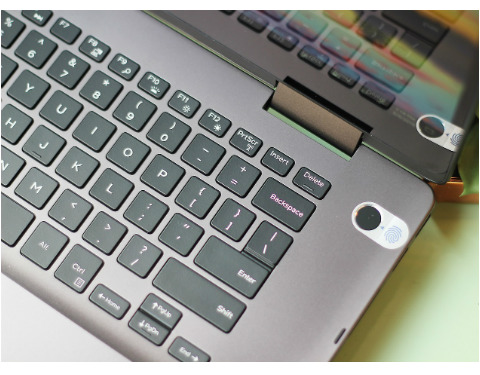 The end of August means lots of new gadgets and laptop news at IFA, the big annual trade show in Berlin. Dell is at IFA with its updated 2018 Inspiron notebooks. With those, you get the latest eighth-generation Intel processors, narrower bezels, heat vents in the hinges, USB-C, Windows 10, and compatibility and Alexa. The 2018 Dell Inspiron notebooks also add ‘Modern Standby’, which wakes them quicker from sleep while using less battery power. You can get the Inspiron 5000 14 for $600+ starting October 2nd, or you can splurge on the more-premium Inspiron 7000 series, which costs $850 to $1,100+, depending on size. Engadget went hands-on with the 5000 and new Dell Chromebook 14 (below).
The end of August means lots of new gadgets and laptop news at IFA, the big annual trade show in Berlin. Dell is at IFA with its updated 2018 Inspiron notebooks. With those, you get the latest eighth-generation Intel processors, narrower bezels, heat vents in the hinges, USB-C, Windows 10, and compatibility and Alexa. The 2018 Dell Inspiron notebooks also add ‘Modern Standby’, which wakes them quicker from sleep while using less battery power. You can get the Inspiron 5000 14 for $600+ starting October 2nd, or you can splurge on the more-premium Inspiron 7000 series, which costs $850 to $1,100+, depending on size. Engadget went hands-on with the 5000 and new Dell Chromebook 14 (below).
If you aren’t a fan of Windows, the new Dell Chromebook 14 is also an Inspiron Chromebook, which like many other Chromebooks now, can also run Android apps. The Dell Chromebook 14 has a 14-inch, tablet-convertible display and is made from aluminum. It has a Core i3 processor, 4GB of RAM and 128GB of storage, which is plenty to run both Chrome and Android apps. You can get the Inspiron Chromebook 14 starting October 23rd for $600. — MV
Acer claims world’s lightest laptops
Acer is also at IFA showing off its updated Swift 5, which it claims is the world’s lightest 15-inch laptop. This year’s Swift 5 is bigger than last year’s, with a 15.6-inch 1080p touchscreen framed by narrow bezels. And the new Swift 5 weighs less than 990 grams (2.2 pounds), thanks to a body crafted from magnesium, lithium and aluminum.
The new 15-inch Swift 5 comes with 8th gen Core i5 or i7 processors, 8 or 16GB of RAM, up to 1TB of solid-state storage and Intel’s UHD Graphics 630 GPU. You can get it first in Europe in November starting at €1,099, and in the US in January starting at $1,099. For photos and hands-on impressions of the new Swift 5, head to Engadget.
Prefer a 14-inch laptop? Acer also previewed its updated Swift 7, claiming it’s both the thinnest and lightest 14-inch laptop on the market. That’s unless other laptop makers beat Acer to that boast by the time the new Swift 7 is released this fall.
New Intel processors announced at IFA
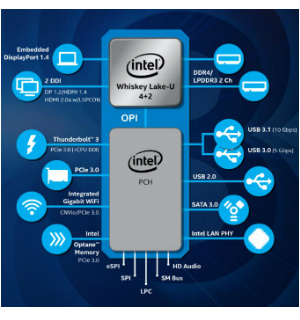 Intel also kicked off the IFA trade show into high (speed) gear by announcing new Intel processors: the new U-series CPUs target mainstream laptops, while the new Y-series processors are made for very thin “ultrabook” style laptops. All new Intel processors include gigabit WiFi, which will really speed up your connections to modern AC WiFi routers.
Intel also kicked off the IFA trade show into high (speed) gear by announcing new Intel processors: the new U-series CPUs target mainstream laptops, while the new Y-series processors are made for very thin “ultrabook” style laptops. All new Intel processors include gigabit WiFi, which will really speed up your connections to modern AC WiFi routers.
The new Intel processors also pack in quad-core audio DSP, which enable you to voice commands at your computer while it’s in sleep mode, and help it to recognize voice commands for multiple virtual assistants. For more details and specs on the new Intel processors, head to Engadget. — MV
Will future Google Chromebooks boot Windows?
The team over at XDA Developers have found evidence that Google’s “Campfire” project may be the Chromebook equivalent of Apple’s Boot Camp. That means that one day in addition to the high-end Google Pixelbook, more Chromebooks (at least, those with enough memory) might be able to boot Windows 10 on the fly. Although Google’s plans for Campfire are still secretive at this point, you can head to to XDADevelopers for more details and speculation on how might future Chromebooks boot Windows. — MV
Acer OJO 500 mixed reality headset debuts
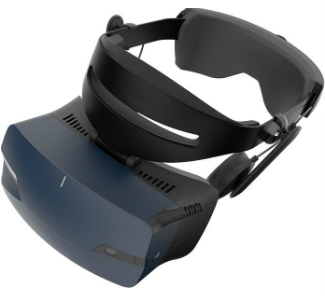 While at the IFA trade show in Berlin, Acer is also showing off its newest Windows mixed reality headset, the OJO 500. The OJO 500 improves on the previous OJO with detachable parts, a sharper display (2880 x 1440), wider field of vision (100-degrees), and a feature that adjusts the distance between the display and people’s eyes.
While at the IFA trade show in Berlin, Acer is also showing off its newest Windows mixed reality headset, the OJO 500. The OJO 500 improves on the previous OJO with detachable parts, a sharper display (2880 x 1440), wider field of vision (100-degrees), and a feature that adjusts the distance between the display and people’s eyes.
Acer is especially targeting the OJO 500 at businesses like museums or attractions, where many customers would use the headset each day. As such, both the lens and head strap can be removed and cleaned. You can get Acer’s OJO 500 in November for $399 in the US, Europe, and possibly elsewhere. The Verge has a hands-on video and photos. — MV
Magic Leap launches AR headset: Magic Leap One reviews
After over a year of hype, Magic Leap has launched its Magic Leap One Creator Edition mixed reality (AR and VR) headset. As a mostly AR headset, the Magic Leap One is more like the Microsoft HoloLens. But as reviewers are pointing out, the Magic Leap One exceeds the HoloLens to offer smooth, high-resolution AR and VR experiences—akin to the realistic VR experiences in today’s best VR headsets. The headset is not yet usable for people who wear glasses (contacts are fine), but an option for prescription lenses is in the works.
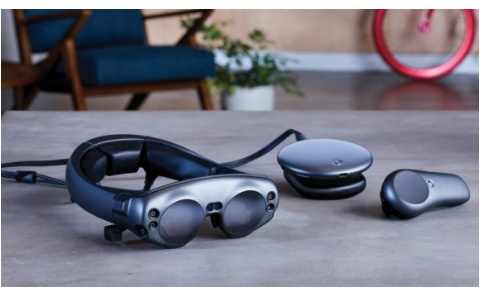 The bad news: Magic Leap One will set you back US$2,300. But you can’t just have the Magic Leap One shipped to you. Instead, the company requires customers to set up an appointment for a personalized fitting and hands-on instructions. Because of that, right now it’s only available in Los Angeles, the San Francisco Bay Area, Seattle, Chicago, New York City and Miami. And as a Creator Edition, for now it’s only targeted at AR/VR developers and influencers.
The bad news: Magic Leap One will set you back US$2,300. But you can’t just have the Magic Leap One shipped to you. Instead, the company requires customers to set up an appointment for a personalized fitting and hands-on instructions. Because of that, right now it’s only available in Los Angeles, the San Francisco Bay Area, Seattle, Chicago, New York City and Miami. And as a Creator Edition, for now it’s only targeted at AR/VR developers and influencers.
We’ve rounded up some of the first Magic Leap One reviews and first-impressions from CNet, The Verge, Next Reality and The Washington Post. Next Reality also reviewed two of what it says are the two best Magic Leap One AR apps: Helio and Screens, an AR web browser and video player. We’ll add more Magic Leap One reviews here as soon as we see them. — MV
Nvidia Turing GPU tech promises real-life graphics
At the SIGGRAPH digital graphic conference this month in Vancouver, Nvidia revealed its eighth-gen Turing GPU hardware that promise a future of hyper-realistic graphics for apps, games, AR and VR. Thanks to processors that measure how light and sound travel through 3D environments, the new Turing GPU greatly speeds up both AI and ray tracing, which simulates the way light works in the real world.
Nvidia CEO Jensen Huang called the company’s new real-time ray tracing tech its most important advancement in 12 years, and “the Holy Grail of our industry”. In his speech, he showed off a Porsche concept car video (pictured top of page), created with real-time ray tracing and Epic Games’ Unreal Engine.
But you’ll have to wait for the tech to appear in your future notebook or gaming device: the Quadro RTX 5000, 6000 and 8000 are targeted only at content creators. They’ll go on sale this fall for $2,300, $6,300 and $10,000, with the top of the line 8000 packing 48GB of RAM. Engadget has more details and video demos. — MV
WAX now sells AR, VR content with digital currency
Speaking of both AR and VR, the Worldwide Asset eXchange (WAX), is now one of several other digital marketplaces to use Blockchain digital currency technology to sell and exchange digital content. Thanks to a new partnership with Terra Virtua, you can store, transfer or trade any 2D or 3D digital item on the WAX Blockchain and view it using Terra Virtua’s platform for AR and VR entertainment content. Head to Medium for more details and a video demonstration. — MV
Vicon Origin VR kit simplifies mobile motion-capture
![]() In other VR news, Motion capture company Vicon unveiled its Origin line of location-based virtual reality hardware at this week’s SIGGRAPH computer graphics show. The Vicon Origin VR kit (pictured) includes trackers, 2.2 megapixel Viper cameras that run up to 240 frames per second, a wireless relay transmitter, and software that’s compatible with popular game engines like Unity and Unreal Engine. Though Origin is designed for location-based VR experiences, Vicon also says it can be used by independent VR developers without a lot of motion capture experience. Venture Beat has has more details. — MV
In other VR news, Motion capture company Vicon unveiled its Origin line of location-based virtual reality hardware at this week’s SIGGRAPH computer graphics show. The Vicon Origin VR kit (pictured) includes trackers, 2.2 megapixel Viper cameras that run up to 240 frames per second, a wireless relay transmitter, and software that’s compatible with popular game engines like Unity and Unreal Engine. Though Origin is designed for location-based VR experiences, Vicon also says it can be used by independent VR developers without a lot of motion capture experience. Venture Beat has has more details. — MV
Viveport Oculus Rift support added
If you have or develop for the Oculus Rift VR headset, you might be happy to know that Vive’s Viveport VR experiences marketplace now supports titles that work with Rift. If you’re a developer, you can now choose your titles to display as Oculus Rift compatible, and Rift users will gain official access starting September 4th. Right now, Viveport offers over 500 titles, and Viveport subscribers can use up to five titles at a time. For more details, see Vive’s blog announcement. — MV
NASA VR & mobile apps mark Spitzer’s 15th birthday
 To mark the 15th anniversary of NASA’s famous Spitzer telescope, the US space agency has launched a mobile app and VR app. The NASA mobile app is a fun, educational photo selfie app called NASA Selfies. In it, your choice of selfie face gets inserted in an official NASA spacesuit, against your choice of any of 30 artist-enhanced Spitzer space images. The NASA Selfies app is out now for iOS and Android.
To mark the 15th anniversary of NASA’s famous Spitzer telescope, the US space agency has launched a mobile app and VR app. The NASA mobile app is a fun, educational photo selfie app called NASA Selfies. In it, your choice of selfie face gets inserted in an official NASA spacesuit, against your choice of any of 30 artist-enhanced Spitzer space images. The NASA Selfies app is out now for iOS and Android.
If you like educational or space VR apps, you’ll dig a new NASA VR experience that puts you inside of Spitzer data-based, 3D artist renderings of five Earth-like planets around Trappist-1, a huge red dwarf star 39.6 light-years from our Sun. Called Exoplanet Excursions, the NASA VR experience is now available for free for the HTC Vive and Oculus Rift from the Spitzer Mission website and soon the Oculus Store. You can also experience a 360-degree version on the Spitzer YouTube channel for mobile VR devices like Google Cardboard. — MV
Humanitarian apps save lives in Syria, Iraq, more
In war, mobile phones are often the only reliable source of information for war victims. Axios has compiled some of the humanitarian apps that are helping to save lives: there’s Hala Systems, an app that alerts Syrians and others about incoming airstrikes; and Gherbtna, an app that helps Syrian refugees around Turkey. But on the other hand, there’s also an app that helps fighters calculate artillery attacks. Read more at Axios.
But in war-torn areas, it can also be dangerous to even be online. Axios also profiles how VPN apps like AnchorFree’s HotspotShield mobile app are protecting users’ privacy so they can obtain and pass along critical news and information over public WiFi networks. See that quick story here. — MV
Chinese tech banned for US federal agencies, suppliers
President Trump in mid August signed into law the Defense Authorization Act, which starting over the next two years will ban US government agencies and their contractors from using certain components or services from several Chinese tech firms, including Huawei and ZTE. The bill covers anything that is a “substantial or essential component of any system,” plus tech for routing or viewing user data. The act also directs US agencies to provide funding for contracted companies that need to replace equipment as a result of the new bill. TechCrunch has more details. — MV
VMware buys CloudHealth
Dell-owned VMware Inc. will acquire CloudHealth Technologies and its cloud management platform for about $500 million, the company announced on August 27th at its annual VMWorld conference. Boston based CloudHealth helps enterprises to control and analyze the costs, compliance and performance of their own data centers and public clouds like Amazon Web Services and Microsoft Azure. As part of the acquisition, VMware will also gain CloudHealth’s 3,000 customers, which include Yelp, Dow Jones, Zendesk and Pinterest. Dell owns 81% of VMware, which is headquartered in Palo Alto. For more details, see Reuters. — MV
—
This mobile news roundup is by MobileVillage Editor Gary Thayer, and also with occasional posts by Appcelerator, a top mobile development platform company. Want your news featured in ‘Mobile Month’? Please check out our guidelines. We give preference to mobile news about trends, innovations, major app updates, big players and official Mobile Star Awards Entrants.
Trending mobile news tags this issue: 2018 iPhone XS leak, 2018 iPad Pro X Apple rumors, Galaxy Note 9 reviews, Pocophone for India & Europe, 2018 Dell Inspiron, Acer’s world’s thinnest laptop, new Intel processors, Nvidia Turing GPU, Lenovo ThinkPad P1, Asus ZenBook Pro vs MacBook Pro, future Chromebooks boot Windows, Acer Ojo AR/VR headset, Magic Leap One reviews, Vicon Origin VR kit, NASA VR & mobile apps, humanitarian apps, Chinese tech banned, VMWare buys CloudHealth





